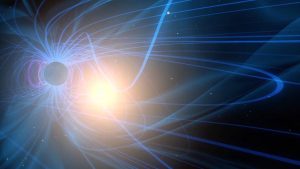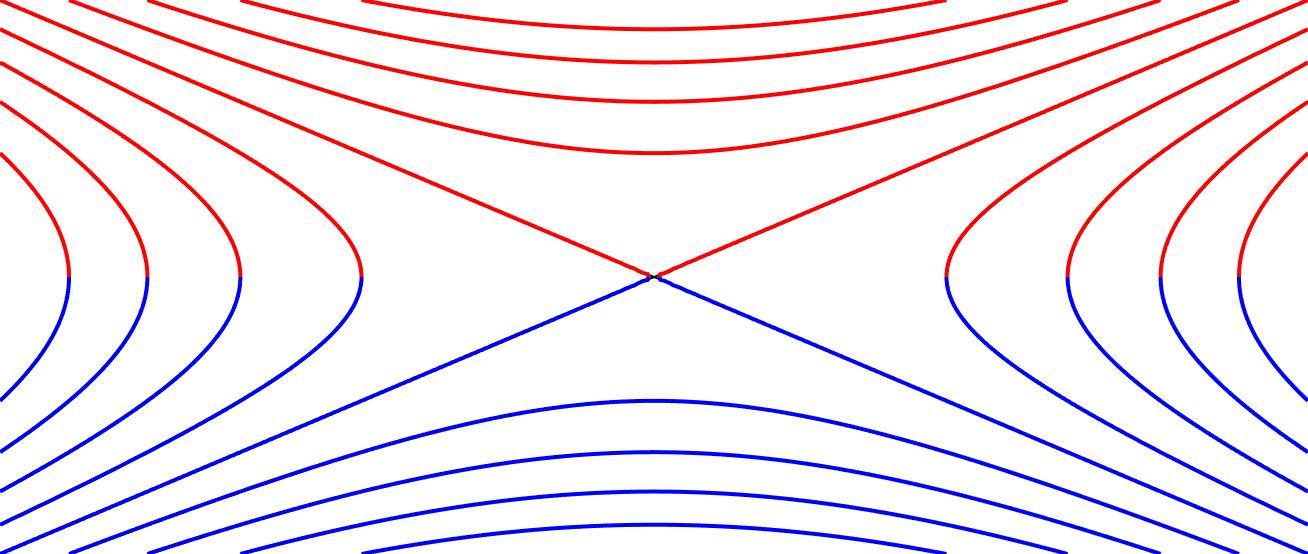
Magnetic reconnection can occur in many plasma environments, including the surface of the sun, the solar wind, the magnetopause, and the magnetotail plasma sheet. Image: NASA
Magnetic reconnection is a fundamental plasma process that converts magnetic energy to plasma energy, accelerating and heating it. This process plays an important role in shaping plasma environments throughout the Universe, and is the driver of large-scale magnetospheric dynamics directly impacting our ionosphere. Magnetic reconnection powers coronal mass ejections (CMEs), is an intrinsic part of magnetosperic substorms and storms, and is a precursor to the beautiful aurora. In the SPPG, we explore many aspects of magnetic reconnection.
Reconnection of magnetic field lines

The particle dynamics in the innermost reconnection region permits the magnetic field to change topology. The magnetic field lines ‘break’ and ‘reconnect’. This innermost region is called the electron diffusion region because the magnetic field diffuses across the plasma, and can be as thin as a kilometer in the Earth’s magnetosphere.
In vast majority of space, the plasma is tied to the magnetic field, and they move in unison. Only in thin boundary layers, where the regular motion of particles becomes comparable to the thickness of the boundary, can the connectivity between plasma and magnetic field be broken. Kinetic effects occurring at these thin layers initially decouple the ions and thereafter the electrons from the magnetic field, allowing the magnetic topology to change. This change in magnetic connectivity is illustrated with oppositely directed ‘blue’ and ‘red’ magnetic field lines approaching each other from opposite sides of a current sheet.
How does magnetic reconnection start and stop?
Magnetic reconnection often, albeit not always, operates in bursts. To properly asses the impact of the reconnection process on our space environment, we need to understand when, where, and for how long it operates. At the SPPG, we investigate these at the same time distinct and connected processes through a combination of fully kinetic particle-in-cell simulations and in-situ spacecraft observations.
How is plasma heated and accelerated by magnetic reconnection?
Magnetic reconnection is an energy conversion process, wherein energy stored in the magnetic field is released, often explosively, into thermal and kinetic energy of the plasma. This energy conversion can occur in many different steps and locations that are connected in a complex manner. To understand the effect of magnetic reconnection on our space environment, for example how various plasma environments are formed and maintained, we need to better understand the plasma energization during magnetic reconnection.

This movie of a kinetic particle-in-cell simulation of magnetic reconnection illustrates how the magnetic energy is converted to plasma kinetic energy and thermal energy. Here the ‘kinetic energy’ is illustrated with the electron bulk flow in the outflow direction ‘x’ and the ‘thermal energy’ is illustrated by the electron temperature.
